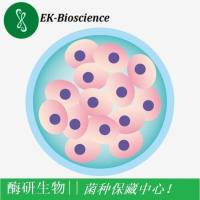Laser-Capture Microdissection to Study Global Transcriptional Changes During Plant Embryogenesis
互联网
386
A key objective in the study of plant embryogenesis is to identify genes expressed in temporal and spatial patterns during development, in order to understand transcriptional control mechanisms regulating pattern formation, differentiation and morphogenesis. Mutagenic approaches have proved powerful to identify essential genes, but global, transcriptome-wide analysis of mRNA profiles in cells at different stages of differentiation would allow the identification of changes in the abundance of major classes of transcripts expressed from genes that are known to respond to regulatory signals, such as hormones. Particular classes of transcription factors or other genes might also be discovered to be associated with particular aspects of cell differentiation. This information would allow the construction of models to describe how signalling pathways might modulate transcriptional changes associated with cell differentiation. Previous limitations in tissue accessibility for RNA isolation have been overcome through the use of laser-capture microdissection, which allows cells from different embryonic tissues to be isolated, for RNA isolation, amplification and analysis by either polymerase chain reaction or DNA microarray techniques.









